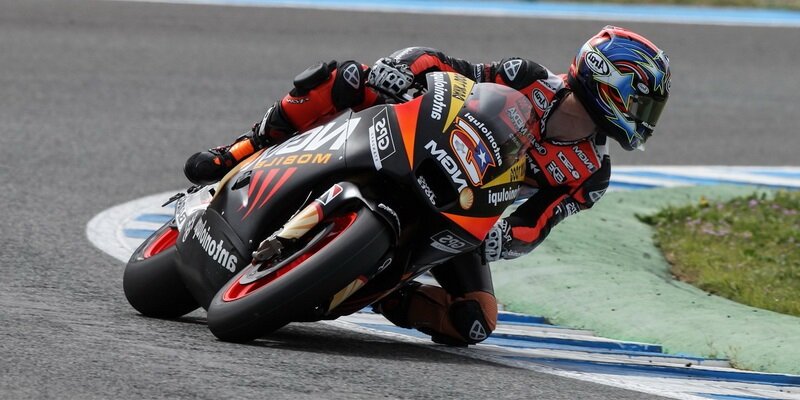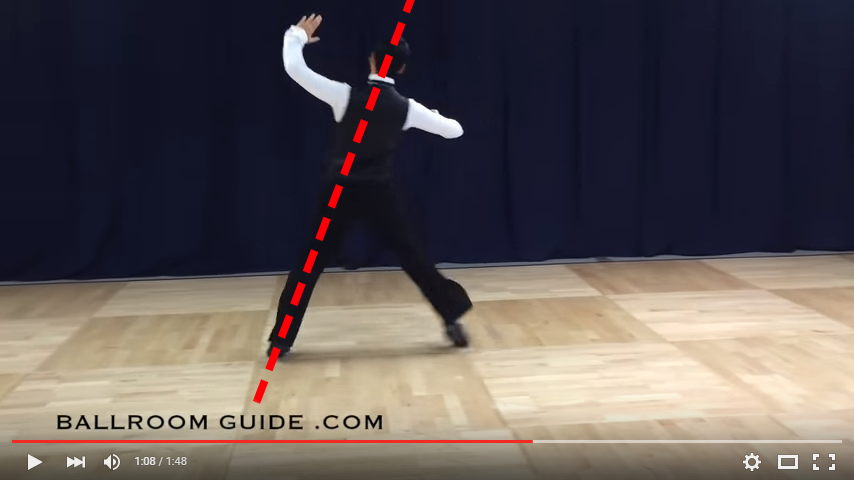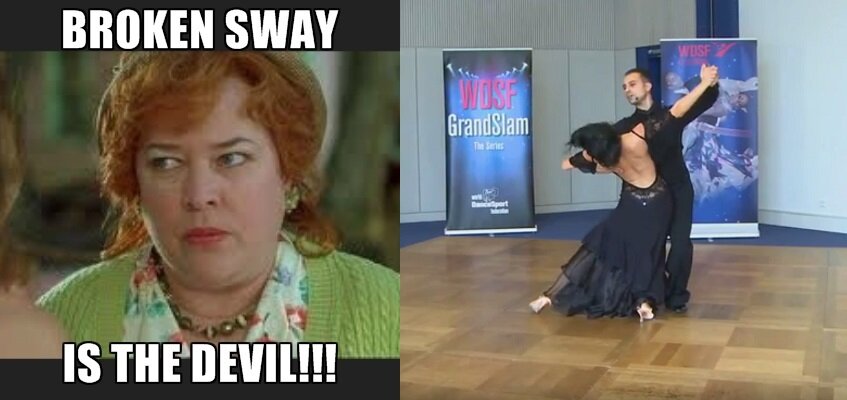The Three Types of Sway 
31 March 2016
Sway is characteristic of good dancing in Standard, so much so that students of dance will try to emulate that one characteristic. The problem is that the way Sway looks is vastly different from the way Sway feels, and a lack of correct understanding of fundamentals will result in broken frame and posture. This article will discuss what Sway really is, and how to generate it correctly.
1. Technical Sway
When most people talk about Sway, the are talking about Technical Sway. This is a natural inclination of the body away from the direction of movement. What this means is that if you dancing a Waltz Natural Turn, on step 2 your body should make a line from the LF (Lady's RF) to the top of your head. Your spine should not be straight up and down in relation to the ground. The reason for this is mechanical: sway kills momentum and allows you to slow down, stop, or change direction. The faster you are moving, the more momentum you generate, and the more Sway you will need to affect that momentum. This is the same reason motorcycles tilt as they go around corners, and the faster they are going, the more they tilt.

In Ballroom Dancing, Technical Sway is just a lean in the direction away from the way you're moving, proportional to your momentum, in order to slow down, stop, or change direction. It is called Technical Sway because it comes naturally from correct technique and is proportionally a result of your Swing, without having to think about the Sway itself at all.
2. Cosmetic Sway
Okay, here is where things start to get dangerous. Absolute beginners are told not to think about Sway at all, because Technical Sway will come as your movement progresses. However, once dancers begin to master basic Swing and Sway, Cosmetic Sway is added to the mix. Cosmetic Sway is a slight tilting of the shoulder line in order to exaggerate shape beyond what Technical Sway allows and make the shape more beautiful. This is achieved by stretching one side upward, while making sure not to crunch the opposite side. I say that this is where things start to get dangerous because when beginners see Sway, they try to copy it by stretching one arm up and crunching the other side, but this will result in an ugly shape and a disruption in balance. Cosmetic Sway is added on top of Technical Sway, not in stead of it. Once the fundamentals of Technical Sway are achieved and Cosmetic Sway is added on top of it to achieve a more beautiful shape.
The idea of Cosmetic Sway is relatively new in Ballroom Dancing. A few decades ago, it did not exist, and shapes were less exaggerated and more controlled. Look at the difference in dancing between these two Waltzes, one from 2014, the other from the early 90's.
Notice that in the first video, there is extreme Cosmetic Sway everywhere, built strongly on top of Technical Sway. In the second video, while you can notice some Technical Sway, couples seem to float across the floor with their top lines mostly undisturbed and still.
To dance Cosmetic Sway, dance a regular Waltz Natural Turn, with a lot of Swing and therefore a lot of Technical Sway, but additionally, between steps 2 and 3 stretch the left side (Lady right side) upward to the sky as the feet close, without distorting the straight topline from elbow to elbow.
3. Broken Sway
You may have been told to steer clear of Broken Sway, but don't be so hasty to judge!

Broken Sway (sometimes called Released Sway) is when the body generates sway from tilting the upper body, and not much happens with the base. This is different from Cosmetic Sway, which is a slight tilting added on top of Technical Sway. The reason many dance students are told not to use Broken Sway is because they try to use it in moving figures, like Natural Turns, when in fact Broken Sway should only be used on Line Figures, when not moving your feet, but shaping, a great example of which is the Oversway, in Tango. Broken Sway should never be used as a substitute for Technical Sway, since they are used in completely different situations.
To dance Broken Sway in an Oversway position, stand on the left foot (Lady right foot), with a flexed knee and the free leg extended to the side. Tilt from the hips and shoulders to the right (Lady left), making sure not to crunch the space under your arms. This is a basic Broken Sway.
So there you have it, the three types of Sway: Technical Sway, Cosmetic Sway, and Broken Sway. Technical Sway is used on all figures that have Swing (i.e. all moving figures in Waltz, Viennese Waltz, Foxtrot, and Quickstep), Cosmetic Sway can be added on top of it to make a more beautiful shape, and Broken Sway is only used in Line Figures.